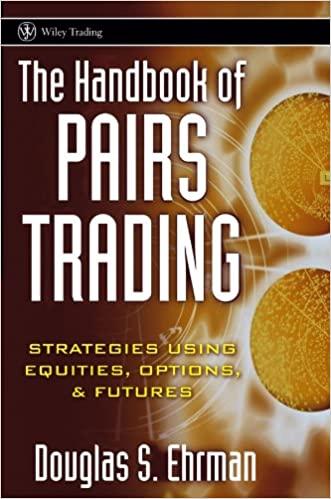Question
The return an investor in a security (a bond or a share of stock) receives is the cost of that security to the company that
The return an investor in a security (a bond or a share of stock) receives is the cost of that security to the company that issued it.
True
False
Due to the fact that a firms capital comes from different sources, a firms cost of capital is a:
Geometric Average
Weighted Average
Arithmetic average
The weighted average cost of capital is interpreted as the required rate of return on:
The firms debt
The firms equity
The firm overall
The weighted average cost of capital is used to:
Discount future cash flows from investment projects
Determine the dividend paid on common stock
Determine the dividend paid on preferred stock
Following is the formula for the weighted average cost of capital:
WACC = r LTD (1-tax rate) w LTD + r PS w PS + r CS w CS
Where:
LTD is long term debt
PS is preferred stock
CS is common stock
In the formula for the weighted average cost of capital, the weights are determined by the firms:
Capital structure
Chief Financial Officer
Projected sources of capital for a particular project
In the formula for the weighted average cost of capital, the cost of debt is adjusted for:
Interest
Taxes
Flotation costs
If a firms capital is distributed in equal proportions, meaning 25% long term debt, 25% short term debt, 25% preferred stock and 25% common stock, the WACC is equal to the:
Arithmetic average of the required return on each of the components
Geometric average of the required return on each of the components
The standard deviation of the required return on each of the components
The WACC accounts for the fact the each of the components of a firms capital structure has a different:
Cost
Interest rate
Tax rate
The required return or cost of long term debt is equal to the after-tax cost of outstanding:
Common Stock
Preferred Stock
Bonds
The Discounted Payback Period method to evaluate investments is more accurate than simple Payback Period because it considers:
Risk and return
The time value of money
The Fisher Effect
The most widely used methods to evaluate investment projects are:
NPV and IRR
MIRR and Discounted Payback Period
IRR and Discounted Payback Period
The Net Present Value of an investment project is determined by using which of the following to discount future cash flows from the project:
The market rate of interest
The coupon rate on the firms bonds
The weighted average cost of capital
If a firm accepts a new investment project, it may be required to issue, or float, new bonds and stocks at some cost which are called:
Interest costs
Investment costs
Flotation costs
A firm should undertake an investment project if the NPV is:
Positive
Negative
Zero
The Internal rate of return (IRR) is the discount rate that results in a:
Positive NPV
Negative NPV
Zero NPV
The IRR is the discount rate at which the investment in the project is equal to the:
The discounted cash flows from the project
The salvage value of the project
The flotation costs of the project
Based on the IRR Rule, an investment is acceptable if the IRR exceeds the:
Weighted Average Cost of Capital
Market Interest Rates
The Risk -Free Rate of Return
The IRR and NPV investment criteria always result in the same accept or reject decision for an investment project.
True
False
If two projects are not independent, they are said to be:
Risk free
Mutually exclusive
Dependent
When is a conflict in the NPV and the IRR a problem:
When the projects are mutually exclusive
When the projects are independent
When the payback on the projects is less than three years
Unconventional cash flow from an investment project means:
A project produces positive and negative cash flows over the life of the project
The salvage value of the project is greater than the book value
The project produces only negative cash flows over the life of the project
If the investment project produces unconventional cash flows or is mutually exclusive, then the accept or reject decision to do the project is based on the:
Risk Free Rate of Return
IRR
NPV
If investment projects are mutually exclusive, always accept the project with:
The higher NPV
The higher IRR
The higher profitability index
Step by Step Solution
There are 3 Steps involved in it
Step: 1

Get Instant Access to Expert-Tailored Solutions
See step-by-step solutions with expert insights and AI powered tools for academic success
Step: 2

Step: 3

Ace Your Homework with AI
Get the answers you need in no time with our AI-driven, step-by-step assistance
Get Started


